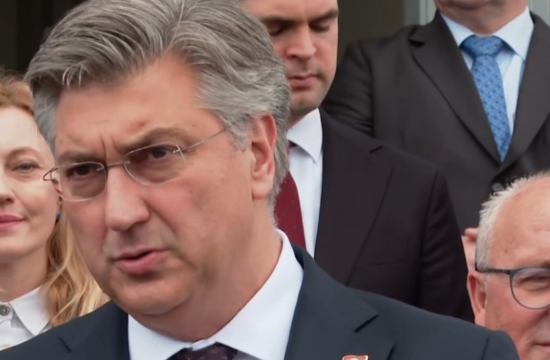Croatian state budget revenues for 2019 are projected at 134.2 billion kuna (€18.1 billion), while expenditures are expected to be 139 billion kuna (€18.7 billion), showed the economic and fiscal policy guidelines for 2019-2021 presented by Finance Minister Zdravko Maric at a cabinet meeting on Thursday.
The document builds on the convergence programme and the national reform programme, which was adopted in late April.
“This document provides a macroeconomic framework for the projection period of the next three years, putting emphasis on three key elements: growth projections for the main aggregates, the labour market, prices and tax components of GDP, the revenue side of the budget and the spending limit,” Maric said.
In 2020, expenditures are expected to increase by 3.6 percent to 139 billion kuna (€18.7 billion), while in 2021 revenues are likely to go up 1.5 percent to 141.1 billion (€19 billion). The figures are based on the expected growth and the fiscal effects of further tax cuts.
The most important changes have been made to the Value Added Tax (VAT) and labour taxation system. In order to reduce the regressive effect of VAT on the most vulnerable social groups, as of January 1, 2019, VAT on fresh meat, fish, fruit, and vegetables will be reduced from 25 to 13 percent, which should help increase citizens’ disposable income.
Expenditures are projected at 139.1 billion kuna (€18.7 billion) for 2019, 140.6 billion kuna (€18.9 billion) for 2020 and 141 billion kuna (€19 billion) for 2021. The largest increase in expenditure next year is expected for pensions and pension allowances, of 1.3 billion kuna (€175.5 million).
There will also be considerable increases in expenditure on child’s benefits and demographic revival measures. Next year 337 million kuna (€45.5 million) will go towards children’s benefits, while expenditure on demographic revival measures, which include these benefits, maternity allowances and subsidised housing loans, will be increased by 270 million kuna (€36.4 million) compared with this year.
Expenditure on the implementation of the curricular reform and other activities in the science and education sector will be 200 million kuna (€27 million) and Croatia’s contribution to the EU budget will be 354 million kuna (€47.8 million).
Thanks to continued fiscal consolidation, the public debt to GDP ratio is expected to fall from this year’s projected 74.5 percent to 71.5 percent in 2019 and on to 68.5 percent in 2020 and 65.4 percent in 2021.
After last year’s surplus of 0.8 percent and this year’s projected deficit of 0.5 percent of GDP, the budget is expected to show a deficit of 0.4 percent in 2019 before balancing out in 2020 and reaching a surplus of 0.5 percent in 2021.
(EUR 1 = HRK 7.39)
Follow N1 via mobile apps for Android | iPhone/iPad | Windows| and social media on Twitter | Facebook.



